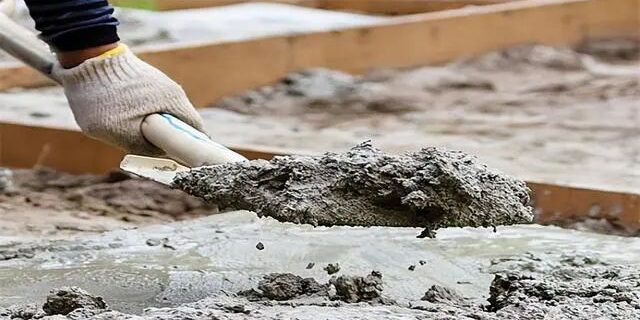How to minimize air bubbles in concrete construction
1. Strengthen the control of admixtures and water-binder ratio
In order to solve the problem of surface bubbles in concrete construction, the control of admixtures and water-cement ratio must be strengthened in the construction design, combined with the specific conditions of the concrete construction site, on the one hand to meet the slump and stability of the concrete, on the other hand to appropriately reduce Water-to-cement ratio.
At the same time, according to concrete construction standards, strictly control the air-entraining agent content and select appropriate admixtures. For C60 and C50 high-strength Portland concrete, the air content of the concrete must be less than 3%. For ordinary concrete, the air content must be low. At 4%, try to reduce air bubbles in concrete construction.
2. Concrete transportation management
The mixing time is unreasonable. If the mixing time is too short, the commercial concrete will be mixed unevenly and the distribution and density of bubbles will be different. Tests show that under the same conditions, when the mixing time is about 3 minutes, the bubble distribution in commercial concrete reaches uniformity. However, as the mixing time increases, the number of bubbles introduced into the commercial concrete will increase. When the mixing time is about 12 minutes, the air content of the commercial concrete reaches the maximum. If the mixing continues, the air content in the commercial concrete will gradually decrease.
If the transportation process is short, the mixing of commercial concrete by commercial concrete tankers will also introduce bubbles. If the transportation process takes a long time or the mixing speed of the tank truck is fast, the air content of the commercial concrete will be seriously lost after arriving at the site, resulting in a large slump loss. In order to ensure the stability of commercial concrete, secondary mixing is often performed during construction, which will introduce a large amount of gas and cause bubbles to form on the surface of commercial concrete.
3. Optimize construction technology
During the concrete construction process, the construction process should be actively optimized to minimize concrete bubbles. Set up an exhaust channel at an appropriate position on the concrete formwork, and apply an appropriate amount of defoaming release agent to the bubbles on the concrete surface to eliminate a large number of bubbles, keep the surface smooth, and ensure the quality of concrete construction.
At the same time, before using the defoaming release agent, a test must be carried out at the construction site. According to the ratio of 1:5, mix the release agent and water to prepare a water-soluble release agent and then add an appropriate amount of defoaming agent.
According to the results of construction experiments: firstly, the application effect of 8% defoaming agent in concrete is better than that of 5% defoaming agent; secondly, the effective cooperation between defoaming agent and release agent greatly reduces the It eliminates bubbles in concrete, solves the problem of concrete honeycomb pitting, and effectively improves the surface condition of concrete. Thirdly, the application effect of defoaming agent and engine oil was tested in the test. Although this oil-based defoaming agent reduced the bubbles size, but the effect in reducing bubbles is not obvious, which is mainly related to factors such as bubble overflow and excessive oil viscosity; fourth, tests have proven that if the formwork used in the concrete construction process is rough, a large number of bubbles will be generated on the surface; If a smooth formwork is used, the number of bubbles on its surface will be less. Therefore, during concrete construction, the formwork material must be carefully checked and try to choose a smooth and high-quality formwork.
4. Improve construction methods
When constructing concrete, attention should be paid to layered vibration and layered distribution, and the construction method should be improved based on the specific conditions of the construction site. On the one hand, the thickness of the concrete layer should not exceed 50cm to facilitate the timely discharge of air bubbles inside the concrete; on the other hand, strengthen Concrete vibration construction management, over-vibration, leakage vibration and under-vibration are strictly prohibited.
5. Carry out maintenance and remediation
For air bubbles generated on the surface during concrete construction, maintenance and remediation must be done. Combined with various indicators of concrete, fly ash and cement of the same proportion, grade, and type should be selected for uniform preparation, and the air bubbles on the surface of the concrete should be filled in time to ensure that the concrete strength and stability. During the filling construction process, when removing the concrete formwork, apply an appropriate amount of cementing powder on the concrete surface to properly absorb the moisture inside the concrete, and use the moisture in the concrete to achieve solidification and hydration reactions, eliminate surface bubbles, and meet the requirements. its strength requirements.







